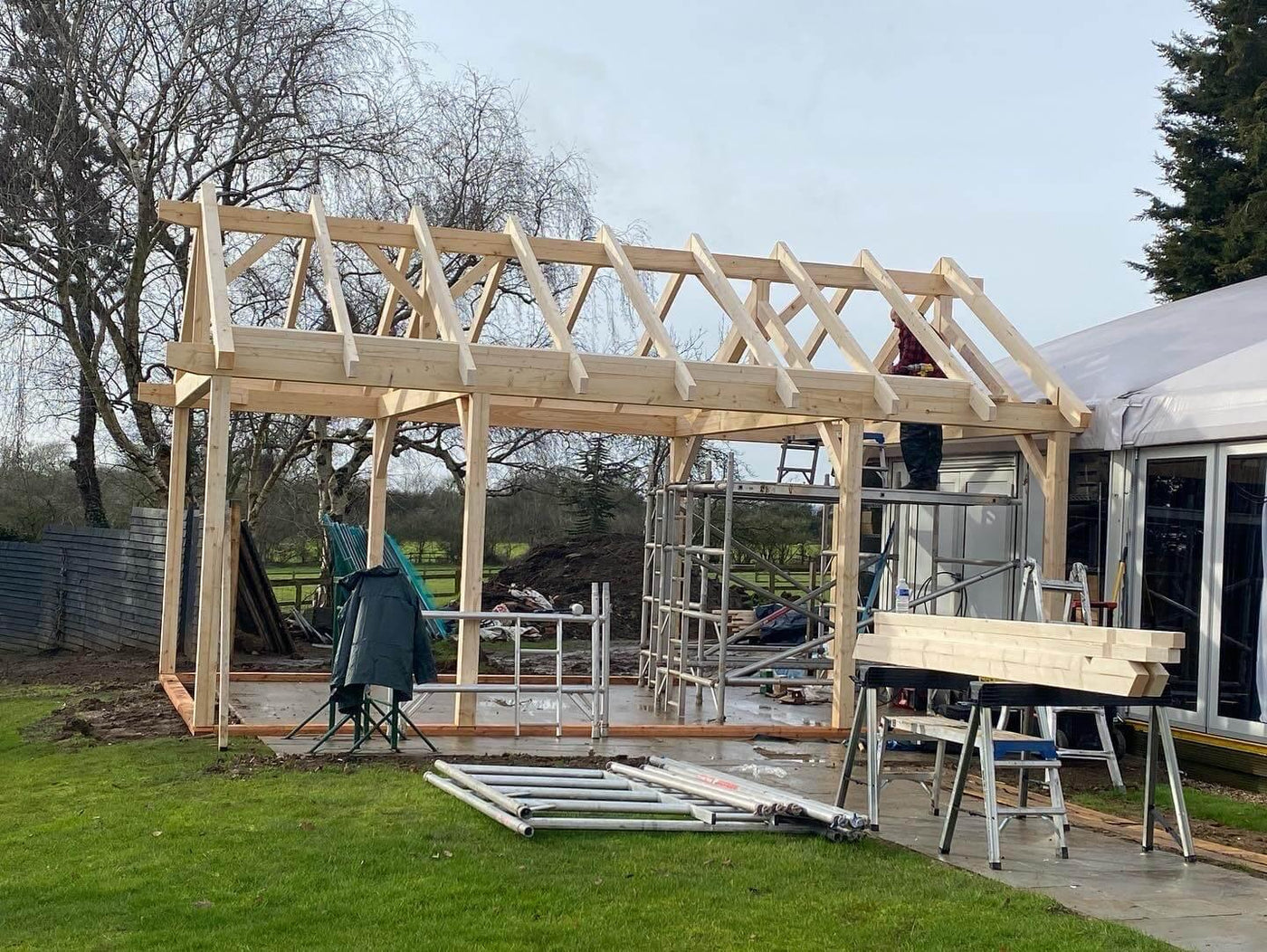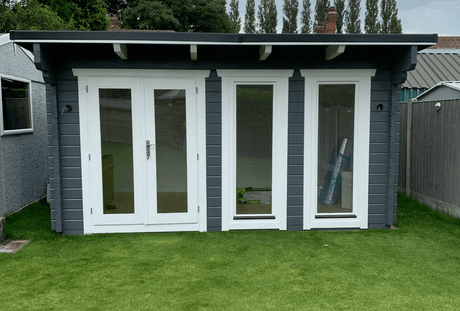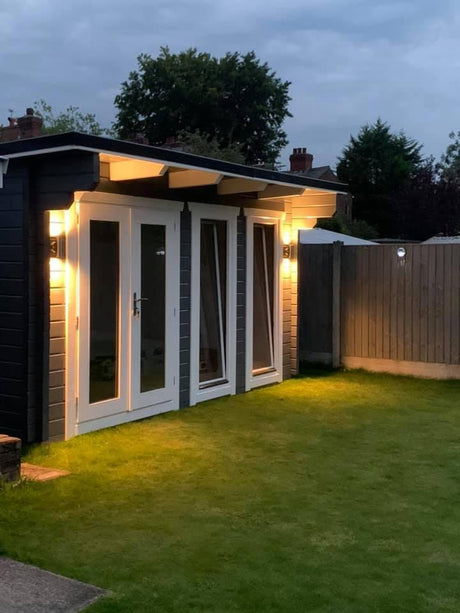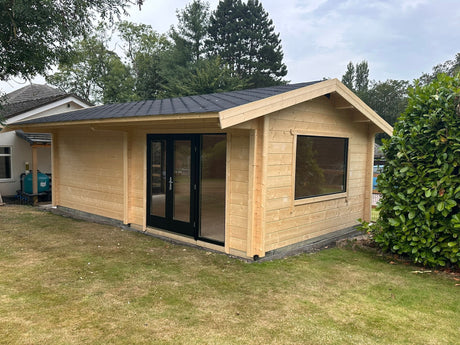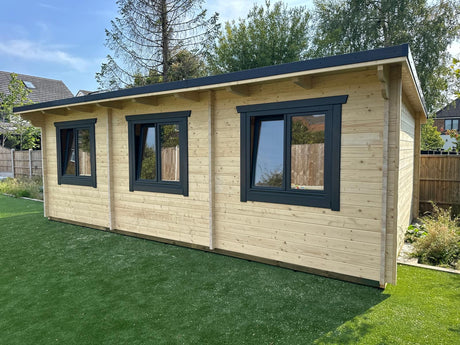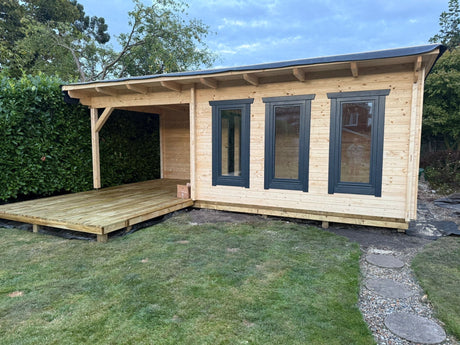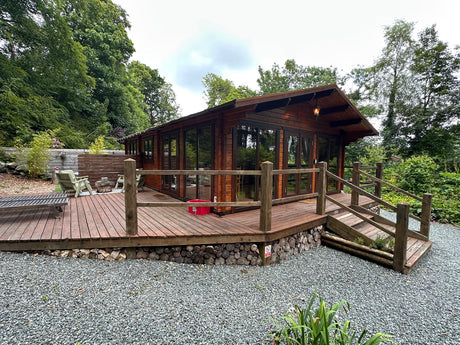To obtain planning permission, start by determining if you need it. Check with your local authority, as rules vary by location. Minor modifications might not need permission. Understand the types of permission: outline, full, or permission in principle. Engage early with your planning department to save time and get tailored advice. Submit well-prepared documents including plans and statements through the local council's portal. Address neighbour concerns and respond to objections promptly. Remember, the quality of your application influences the decision. By following these steps, you'll navigate the process more smoothly, uncovering key insights along the way.
Understanding Planning Permission
Before you embark on any building project, it's crucial to understand what planning permission entails and why it's required. Essentially, planning permission is a legal process to determine whether your proposed construction, extension, or major alteration complies with local development guidelines. This is where your local planning authority comes into play. They're the gatekeepers who assess whether your project aligns with the strategic vision for development in your area.
To kick things off, you'll need to submit a planning application. This is your formal request for permission to proceed with your project. But don't worry, applying for planning permission isn't as daunting as it sounds. Your first step is to gather all the necessary details about your project. This includes drawings, site plans, and possibly an environmental impact assessment. Once you've got all your ducks in a row, you're ready to apply for planning permission.
You can submit a planning permission application either online through the local planning authority's portal or by mail. Remember, a well-prepared application is key to smoothing the way forward. It demonstrates your commitment to compliance and can significantly influence the decision-making process in your favour.
Determining Your Need for Permission
How do you know if your project requires planning permission? It's a question that often surfaces when you're considering making changes to your property. The first step is to check with your local authority, as regulations can vary significantly depending on your location. Your local planning department is a valuable resource for understanding whether your specific project falls into the category of work that requires planning permission.
Not every project needs permission, but it's crucial to find out before you proceed. Minor modifications might not, but more significant changes usually do. It's better to be safe and ask rather than assume and face potential issues later on. When in doubt, reaching out to your local planning department can clarify your project's status and prevent any legal complications.
If you discover that you do need planning permission, don't worry. Applying for permission is the next step in your project's journey. While it might seem daunting, remember that this process is designed to ensure that all construction meets local guidelines and regulations. Ensuring you're applying for the correct type of permission is essential, but that's a topic for another discussion.
Types of Planning Permission
Several types of planning permission exist, each tailored to different kinds of construction and alteration projects. Understanding the different types of planning permission is crucial as you embark on your development journey. It's not just about getting permission; it's about getting the right kind for your specific project.
Firstly, there's outline planning permission. This is where you get approval for the general principle of what you're planning to do. It's useful if you want to see if your project is viable before you dive into detailed plans.
Then, there's full planning permission. This is the most comprehensive form of consent. You'll need detailed plans of your project, as it requires approval of the entire scheme, not just the concept. It's your go-to option if you're ready to move forward with a clear vision of your project.
Lastly, permission in principle is a more recent addition to the planning landscape. It strikes a balance between outline and full planning permission, focusing on the development's location, use, and amount of development.
Each type serves a different purpose, and choosing the right one can save you time and resources. Whether you're building a new home or transforming an existing property, understanding these permissions is your first step toward turning your vision into reality.

Engaging With Your Local Authority
Why should you reach out to your local authority when planning a construction or alteration project?
Engaging with your local authority early on can save you a lot of time and potential headaches down the line. Before you dive deep into your project, it's crucial to contact your local authority's planning department. This initial step isn't just about adhering to regulations; it's about gaining valuable insights that could streamline your planning process.
When you reach out, you're not just ticking a box. You're opening a channel of communication that can guide you through the often complex planning permission landscape. Engaging with your local authority allows you to understand the specifics of what's required for your project, considering the unique regulations and restrictions of your area.
It's also the perfect opportunity to discuss the pre-application process, which, while we won't delve into its benefits here, is a critical step in ensuring your project aligns with local planning policies.
Pre-Application Advice Benefits
Seeking pre-application advice from your local authority can significantly enhance your project's chances of success, ensuring it aligns with local planning regulations and expectations. This step, often overlooked, acts as a critical bridge between your initial project idea and submitting a planning application.
Engaging with experts for planning advice early on unveils a plethora of pre-application advice benefits. You'll gain insights into potential pitfalls or requirements you mightn't have considered. It's like having an insider's guide to the often complex planning process. This preemptive strike can save you time, money, and frustration by highlighting issues that could cause delays further down the line.
Moreover, a planning consultant can offer tailored advice specific to your project's needs. They're adept at navigating the planning system and can provide strategic recommendations that boost your application's approval odds. Their involvement ensures you're not going in blind when you're ready to submit your planning application.
Ultimately, leveraging pre-application advice streamlines your path to obtaining permission. It not only demystifies the expectations of your local planning authority but also positions your application for a smoother approval process.
Preparing Your Planning Application
Having gathered valuable pre-application advice, it's now crucial to focus on meticulously preparing your planning application. This stage is your opportunity to put your best foot forward, ensuring all your ducks are in a row for a smooth review by the planning department. You'll need to fill in an application form, which is your formal request for permission. It's vital to read the form carefully and supply accurate and comprehensive information.
As you navigate this application process, remember that the planning officer assigned to your case will assess your proposal against local planning policies and guidelines. Therefore, it's in your best interest to familiarise yourself with these guidelines to anticipate any potential issues or questions.
Filling in an application might seem daunting, but it's essentially about presenting your project in the best possible light. Make sure you're clear about what you're proposing and why. This clarity will help the planning department understand your vision, significantly impacting their decision.

Essential Documents and Plans
To ensure your planning application stands the best chance of approval, you'll need to compile and submit several key documents and detailed plans. When you decide to make a planning application, understanding what you need to include is crucial. The planning process can be intricate, but with the right preparation, you can navigate it smoothly.
First off, your application for a new development must include a site plan and block plan that accurately depict the proposed changes. These plans are essential documents and should detail the scale and extent of the project, showing boundaries and the relationship to neighboring properties.
Additionally, you must submit detailed drawings of both the existing and proposed elevations. These visuals help the planning authorities understand how your project will look and its impact on the surrounding area. Also, include a written design and access statement, explaining the design principles and concepts behind the project. This document is vital, as it communicates your vision and how it aligns with local planning policies.
Lastly, ensure all forms are correctly filled out and any necessary supporting documents are included. These might cover assessments of environmental impact or heritage statements, depending on the nature of your project. By gathering these essential documents and plans, you're setting a strong foundation for your application's success.
Submitting Your Application
Once you've gathered all the necessary documents and detailed plans, it's crucial to submit your planning application through the correct channels. The primary method for submitting your application is through your local council's planning portal. This online system streamlines the process, allowing you to upload documents and track your application's progress efficiently.
Before you proceed, ensure you've thoroughly checked your local council's submission guidelines. Each council may have specific requirements or preferences for how applications should be presented. Ignoring these can delay your application or, worse, lead to a rejection.
After submitting your application, a planning officer assigned to your case will be your main point of contact. They'll review the materials you've submitted, assess your proposal's viability, and may visit the site to better understand the project's context within the community. It's vital to maintain open and transparent communication with your planning officer. Respond promptly to any requests for additional information or clarification to keep the process moving smoothly.
Application Fees and Costs
Understanding the costs involved, you'll find that planning application fees can vary significantly depending on the nature and scope of your project. When you're looking to get planning consent, it's crucial to factor in these costs early on to avoid any surprises. Generally, the fee for applications for planning permission is set by the local planning authority and is determined by the size and type of your planning and development project.
So, how much does it cost to secure planning permission? For smaller projects, such as home extensions or alterations, the fees might be relatively modest. However, for larger developments, the costs can escalate quickly. It's not just the application fees you need to consider; there are also potential costs for required surveys, drawings, and reports to support your application.
To navigate these expenses effectively, it's advisable to do thorough research or consult with a professional. They can provide you with a detailed breakdown of the expected costs and help you budget accordingly. Remember, investing in a comprehensive application can improve your chances of success, making it a worthwhile expense in your journey to get planning consent.
Navigating Neighbour Consultations
After considering the financial aspects of your planning application, it's time to focus on engaging with your neighbours about your proposed project.
Navigating neighbour consultations is a critical step in the planning process, often influencing the outcome of your application. It's your chance to explain your plans, address any concerns, and potentially garner support, which can sway planning decisions in your favour.
Start by introducing your project to your neighbours personally. A friendly, straightforward approach can ease tensions and foster a cooperative atmosphere. Explain how you've considered the impacts on their privacy, property, and the local environment. Remember, the more informed your neighbours are, the less likely they'll be to object based on misunderstandings.
Be prepared to answer questions and provide details about your project. Your local planning council can offer guidelines on what information to share. Engaging in open dialogue demonstrates your willingness to work within the planning system and consider the community's well-being.
Lastly, document all interactions with your neighbours. This record can be valuable if the council requests evidence of consultation. By proactively managing neighbour consultations, you're not just following a procedure; you're building a foundation for positive community relations.
Responding to Objections
Despite your best efforts to engage positively with neighbors, you'll likely face some objections to your planning application. It's crucial not to see this as a setback but as an opportunity to address concerns and strengthen your proposal.
When objections arise, your first step should be to thoroughly review them against relevant planning policies. Understanding the specific issues at hand will allow you to adjust your plans or articulate a more convincing argument for securing planning approval.
If the objections are rooted in misunderstandings, you might find that a direct conversation can resolve concerns. However, for more complex issues, consider revising your proposal to incorporate planning conditions that mitigate the impact of your development. This proactive approach demonstrates your commitment to community harmony and compliance with local planning policies.
The Decision Process Explained
Once your planning application is submitted, it enters a decision-making process that ultimately determines whether your project can proceed. Understanding how the planning system works is crucial to navigating this phase effectively. Here's what you need to know to get planning permission without unnecessary hitches.
Assessment by Local Planning Authority: Initially, your application is reviewed for completeness and then assessed against local planning policies and guidelines. At this stage, the authority might request further information or suggest modifications to ensure compliance.
Public Consultation and Feedback: Neighbors and other stakeholders are given the opportunity to view your plans and submit their comments. This feedback can influence the decision, so it's essential to address any concerns proactively.
Decision by Planning Committee or Officer: Depending on the complexity and scale of your project, the decision to grant permission might be made by a planning officer or referred to a planning committee. These committees meet regularly and base their decisions on planning guidelines, the local development plan, and input from the public consultation phase.
What to Do If Denied
If your planning application gets denied, it's crucial to understand your options for moving forward. First, don't panic. You've got avenues to explore that can still lead to securing planning permission. Begin by reviewing the reasons for denial closely. This feedback is gold; it tells you exactly what needs addressing.
Your immediate step could be to resubmit your application. However, this time, you'll need to demonstrate how you've tackled the issues raised. Adjustments to your proposal, based on the feedback, can significantly enhance your chances of success without incurring additional fees.
If resubmission doesn't appeal or you believe the decision was unfair, appealing to the planning inspectorate is your next move. This process involves presenting your case to an independent body, which will re-evaluate your application. Here, thorough preparation is key. You'll need to present a strong argument, backed by evidence, showing why your project should be approved. Remember, the planning inspectorate's decision is final, so make your submission count.
Gaining planning permission after a denial isn't easy, but with the right strategy and a clear understanding of what you need to demonstrate, it's certainly possible. Keep focused, adapt your plans as necessary, and stay persistent.
Extending Your Planning Permission
Having navigated the challenges of obtaining or appealing for planning permission, you might find yourself needing to extend the validity of that permission as your project progresses. It's not uncommon for delays to occur, causing the initial planning consent to near its expiration before you've even broken ground. Extending your planning permission is essential to avoid starting the application process from scratch.
To effectively extend your planning permission, keep these key points in mind:
Submit before expiration: Ensure you apply for an extension before your current planning consent expires. This preemptive step prevents legal and logistical headaches, allowing you to focus on the building work.
Document changes: If your project scope or design has evolved since you were first granted planning permission, document these changes comprehensively. Changes might impact the decision to extend your permission.
Local authority guidelines: Each local authority may have its own set of rules for how to extend planning permission. Familiarize yourself with these and follow them closely to streamline the process.
Planning Permission for Extensions
Why should you consider obtaining planning permission for extensions on your property?
Well, extending your home can offer more space and potentially increase your property's value. However, not every extension requires planning permission, but it's crucial to know when you do need it.
For instance, a single-storey extension typically has more leeway, but there are still limits on size and placement you need to be aware of. If your plans exceed these, you'll need planning permission in the first place. That's why it's essential to always check with your local planning authority before you start. They can provide guidance on whether your extension needs approval.
Conclusion
You've now sailed through the maze of obtaining planning permission. From identifying if you need it, to engaging with your local authority and understanding the decision process, you're well-equipped.
If you hit a wall with a denial, remember, it's not the end of the road—there's always a way to appeal or extend your permission.
Embarking on an extension? You're already a step ahead. Remember, securing planning permission is less about jumping through hoops and more about following a map to your project's success.

